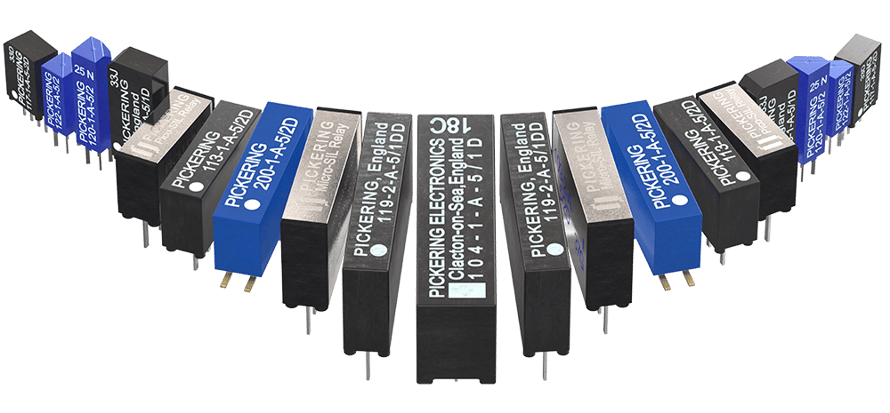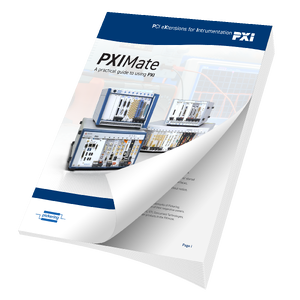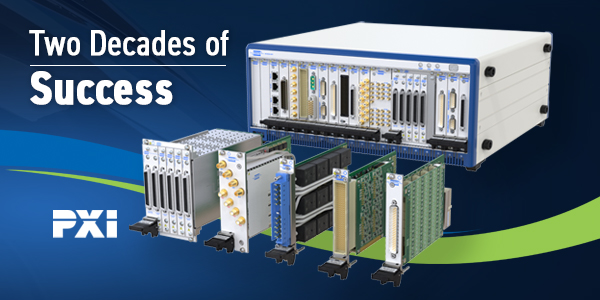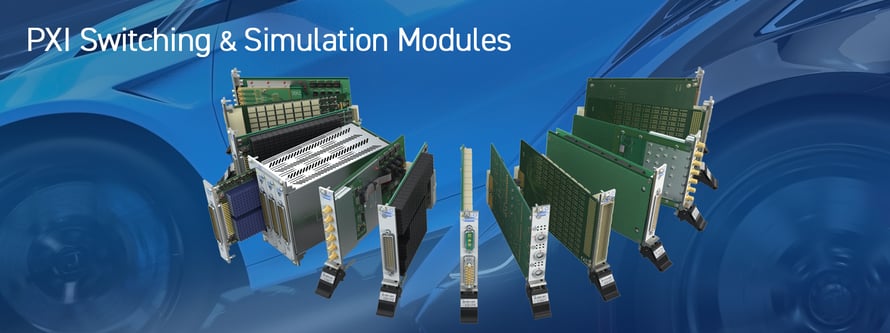How a COTS PXI Platform Can Benefit Your Automated Test System
Introduction
A commercial off-the-shelf (COTS) industry-standard test and measurement (T&M) platform has distinct advantages for the design, deployment, and sustainment of automated test systems (ATS). Over the past 20 years, PXI has become the preferred solution in all global electronic market sectors. There are many reasons for this – the PXI platform is modular, scalable, and cost-effective. There’s an unparalleled breadth of industry support for PXI and thousands of instrumentation, switching and simulation solutions available from leading T&M vendors. This means that PXI has the broadest range of product coverage in the modular market today and into the future. So, how does the selection of the PXI test platform assist ATS development engineers?
Safety in Numbers
PXI is an industry-standard governed by the PXI Systems Alliance (PXISA) and is supported by >60 T&M vendors worldwide. With 20 years of innovation, the PXI platform is the primary test and measurement standard in use today and is deployed to solve a range of complex measurement problems. There are two underlying endeavors by the PXISA and its members that help to guarantee PXI’s success.
First, the PXISA technical committee has ongoing efforts to implement new features to ensure PXI addresses current testing needs and ensures these improvements remain backward compatible with past generations of PXI products. The most obvious of these developments is the inclusion of hybrid slots on PXI Express (PXIe) chassis, allowing test engineers to use standard PXI modules (by far the most common type available) and have them work together with the latest PXIe modules.
Deployment
The PXI platform simplifies and expedites ATS deployment in many ways – here are a few examples:
- Reduced lead times for COTS PXI hardware and associated software
- Reduced ATS footprint using an integrated PXI system
- Increased test throughput – single integrated chassis and modules, standard PXIe controllers, in-built module synchronization, switch scan list support
- Common module interfaces – simplify interconnection with standard cabling and mass interconnect solutions
- Manufacturer’s software application tools:
- Soft Front Panels – intuitive manual control for debugging and test status monitoring
- Automated Signal Routing – switching is an integral component of most ATS and is very well supported in PXI for many applications. By using a switch vendor’s signal routing application and simply specifying the ATS endpoints are connected through a switching system, test development times can be cut in half.
- Simulation – start program development before receiving the actual hardware to expedite deployment.
The vast choice of modules in PXI makes ATS development virtually a “catalog” exercise. As an example, here is one common application area that is well supported in PXI: Sensor Simulation.
Sensor Simulation
Sensors are ubiquitous in today’s world. A thorough test strategy is important in all electronics applications. But, in certain cases, such as safety-critical electronic control units, satellites, and avionics, it is essential. Sensors add a layer of complexity to a test strategy. They must be exercised across their complete operational range when testing the controllers that make decisions based on sensors’ input. It is usually not practical to incorporate actual real-world sensors into a test system, so external hardware designed to replace these sensors is used. Replacing actual sensors with simulation reduces costs by creating smaller test systems, and increases test throughput.
Sensor simulation is very well supported in PXI, with COTS modules available to simulate a wide range of devices, including thermocouples, linear variable differential transformer (LVDT) position sensors, strain gauges, resistance temperature detectors (RTD), and other resistive sensors. These are commonly used in Hardware-in-the-Loop (HIL) test systems under Real-time Operating System control, in conjunction with PXI fault insertion switching to validate safety-critical controllers and applications.
Sustainment
PXI switching most commonly utilizes mechanical relays and is the ATS component that is most likely to fail. PXI switch manufacturers often embed, or feature external relay self-test tools to make on-site repair possible, thereby shaving days or even weeks off the usual return-to-factory repair process. If manufacturer intervention is required, PXI’s modularity means that modules are quick and easy to repair.
PXI’s adoption by major T&M suppliers ensures long-term support for the platform, with 15-20 years of support being guaranteed by some vendors. Also, a 3-year manufacturers’ warranty is commonly available for PXI products.

Various relays from Pickering Electronics
Conclusion
By employing an industry-standard platform such as PXI, test engineers can significantly simplify their overall ATS design and implementation process – as well as facilitate long-term, organic support for their test systems and applications.
Want to learn more about PXI? Check out our FREE PXImate ebook



